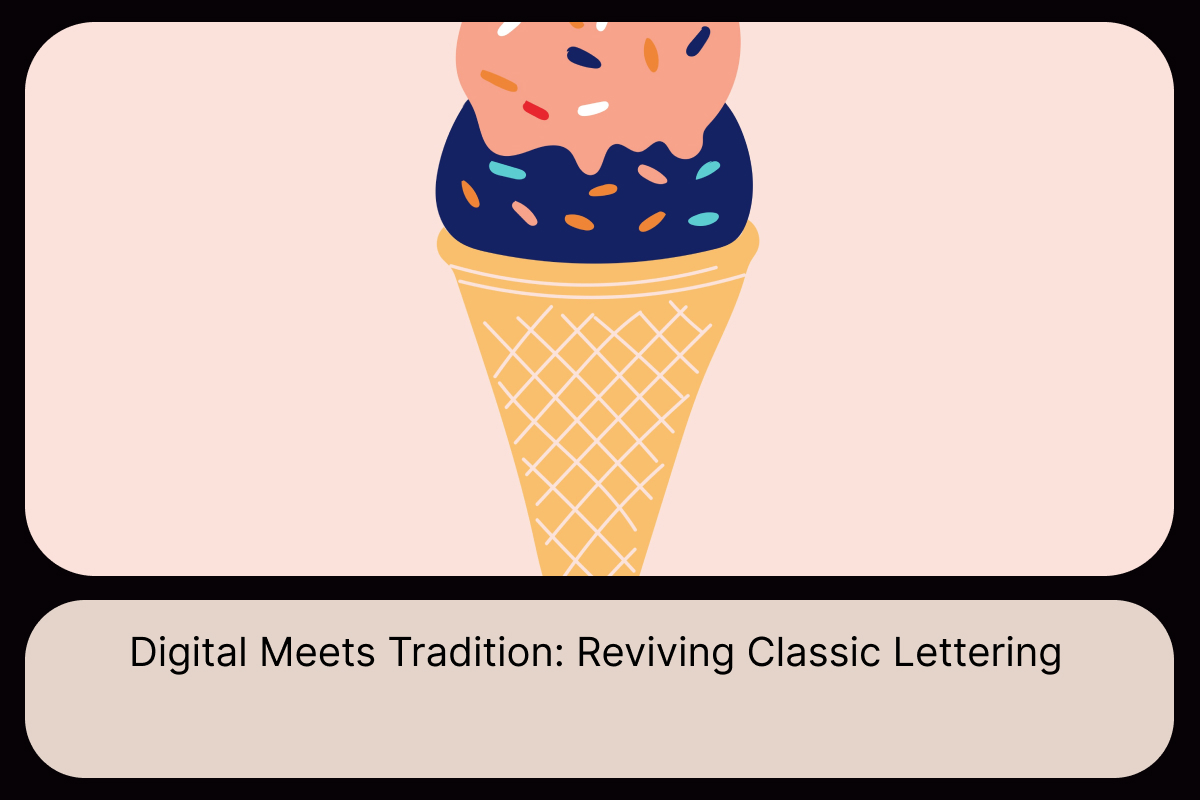Typography has always been more than just letters on a page—it’s an essential part of cultural expression and branding. From the hand-painted signs of old markets to the elaborate calligraphy found in historical manuscripts, lettering carries a sense of identity, craftsmanship, and tradition.
As digital design evolves, many designers and artists seek to preserve these classic styles while integrating them into modern visual landscapes. Whether through custom fonts, digital calligraphy tools, or AI-powered type generators, traditional typography is making a strong comeback in today’s digital-first world.
How Technology Revives Traditional Lettering
The transition from hand-drawn letters to digital formats has opened endless creative possibilities. Vector-based software such as Adobe Illustrator and Procreate allows artists to refine hand-drawn designs with precision while maintaining their organic charm. These tools make it possible to scale, manipulate, and customize traditional lettering styles with ease, ensuring they remain relevant in modern applications.
Additionally, digital brushes and textures now closely replicate the imperfections of ink, paint, and engraving, making it easier than ever to recreate vintage-style typography without losing its authentic feel. This blend of old and new is why handcrafted typography continues to thrive in contemporary design.
Chicano Font Generators: Blending Heritage with Innovation
One of the most striking examples of traditional typography meeting digital innovation is the rise of Chicano font generators. These tools allow designers to instantly create text in the iconic Chicano lettering style, a form of calligraphy deeply rooted in Mexican-American culture, street art, tattoo design, and mural traditions.
The Chicano style, characterized by its bold strokes, elegant flourishes, and Gothic-inspired forms, has been an important symbol of identity and artistic expression for decades. With digital font generators, these designs are now more accessible than ever, allowing artists, businesses, and designers to incorporate this unique aesthetic into modern branding, apparel, and digital media.
The Influence of Classic Lettering on Modern Branding
Classic lettering styles are experiencing a renaissance in branding and marketing. Many brands turn to vintage-inspired fonts to evoke nostalgia, authenticity, and sophistication. Here’s how different industries use traditional typography to make an impact:
- Beverages & Spirits – Many premium liquor brands use vintage scripts and Gothic-inspired typefaces to emphasize heritage and craftsmanship.
- Fashion & Streetwear – Retro lettering is making a strong comeback in logo design, especially in urban brands that celebrate cultural identity.
- Music & Entertainment – From hip-hop album covers to rock band merchandise, bold and artistic fonts help capture the essence of each genre’s visual identity.
The strategic use of classic typography in branding shows how timeless design elements can still resonate in the digital era.
The Future of Handcrafted Typography
As digital tools become more advanced, the fusion of technology and traditional lettering will continue to evolve. AI-powered design tools and machine learning algorithms are beginning to understand human artistic choices, making it easier to generate custom fonts that feel handcrafted.
However, the heart of typography will always remain in its handmade roots. While software can replicate textures and effects, the human touch, imperfections, and artistic intuition behind classic lettering will never be replaced.
Conclusion
Classic typography isn’t fading away—it’s being reinvented for the modern age. Thanks to digital innovations like Chicano font generators, designers can preserve the artistry of traditional lettering while expanding its reach into branding, fashion, and digital media. The fusion of tradition and technology ensures that the craftsmanship of the past will continue to inspire the future of design.







Leave a Comment